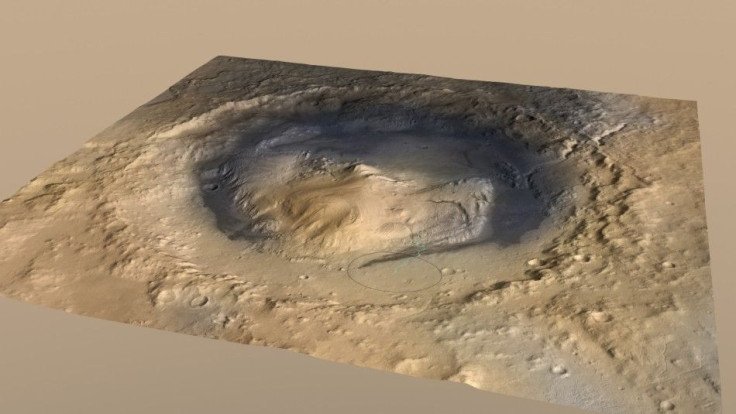Evidence Of Microbial Life On Mars: Mars Curiosity Rover Came Across Crater That Once Held A Lake

NASA's Mars Curiosity Rover scientists, on Dec 8, said that Rover had come across a site which was once a large lake. They said that over 10 million years ago, it could have been a lake that was drained away.
According to Discovery News, Mars Curiosity Rover had been exploring a three-mile high mound, Mount Sharp, when it came across the impact crater that is 96 miles in width. Curiosity collected data over the past two and a half years and the discovery was made based on the data collected.
A Curiosity scientist from Imperial College in London, Sanjeev Gupta, said that the scientists, with the help of Rover, could see a series of beds and sandstones with pebbles on it, and that it was inclined towards the south. According to what the scientists believe, when the lake existed, Mount Sharp did not. Gupta said that similar beds existed on Earth and were found at the mouth of river channels.
John Grotzinger, the lead scientist of Curiosity Rover from the California Institute of Technology, said that they think that erosion and sedimentation could have resulted in the formation of Mount Sharp. The research by the NASA scientists shows that the mound was formed because of sediments that was deposited in the centre of the lake many years ago. The scientists said that the sediments might have been carried in the rivers that originated from the crater and then ended in the waters, in turn filling the crater basin. The research suggested that winds could have led to the erosion of the deposits, resulting in the creation of the mountain.
Scientists believe that there was a continuous cycle of wet and dry times in the crater for a span of over millions of years. They suggest that this cycle could have boosted the chances for the condition to support microbial life on the Red Planet. Michael Meyer, a scientist with NASA's Mars Exploration Program, said that the size of the lake and the time taken as well as the series for the water to turn up in the lake millions of years ago pointed out the fact that there was enough time for life to thrive in Mars.





















